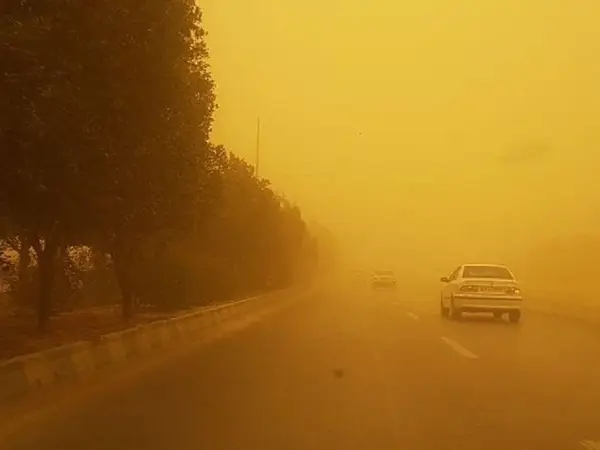An Iranian lawmaker says the government must cooperate with Saudi Arabia and Iraq to mitigate recurring dangerous dust storms sweeping Iran and the region.
"Dust storms will definitely recur in the coming months, and more frequently if we can't solve the problem through diplomacy and international relations with countries such as Saudi Arabia and Iraq where dusts originate from," Karim Hassani, member of parliament from Ahvaz in the southwestern province of Khuzestan, said.
Hassani urged the government of President Ebrahim Raisi to form a joint committee with regional countries as well as international bodies including the World Health Organization (WHO) to find ways to mitigate the problem.
Long-term measures to reduce dust storms include management of water resources and planting drought-resistant trees in deserts to hold down sands. Iran has for years used different methods to stabilize sand dunes with vegetation restoration, but not sufficiently.
Saudi Arabia and other regional countries also aim to plant billions of drought-resistant trees in the coming decades to reduce carbon emissions, pollution and land degradation.
Since mid-March, massive dust storms have hit various parts of the country, including the capital Tehran. Dust and sand originate both within Iran and in neighboring countries. Dust storms have caused a health crisis in recent days and forced the government to shut down schools and government offices in some cities and cancel outdoor sporting events. Officials warned of another wave hitting on Tuesday and Wednesday.
The capital Tehran was logged as the most polluted city in the world on Friday with air quality hazardous and visibility very low largely due to the very high level of airborne particles.
Dust storms and other pollutants have increased markedly in recent years in several Iranian provinces, including Khuzestan, Kermanshah, and Sistan-Baluchestan.
Although air quality in Tehran is generally bad due to the huge number of inefficient vehicles, industries, and the city's position at the foot of mountains that trap pollution, recent levels of pollution are unprecedented.
Municipality and health ministry officials have attributed the very high level of pollution in Tehran and other cities including the west and southwest of the country in recent days to dust coming from neighboring Iraq.
Sand and dust storms affect much of North Africa and countries in the Middle East. While many sandstorms have natural causes, environmentalists blame anthropogenic factors such as building dams on rivers and drying of marshes and wetlands for desertification of vast areas.
In Iran's southwestern Khuzestan Province, for instance, the building of Gotvand dam on the Karoun river to support industries such as steel in other provinces and drying ancient marshes and lagoons to dig for oil have created vast sources of anthropogenic dust storms.
But Khuzestan is not the only place in Iran where mismanagement of water resources has created potential sources of dust storms. Lake Urmia (Urumieh), once a navigable lake in northwestern Iran, has shrunk to half its size in the past four decades due to allocation of water from rivers that fed it to agriculture.
In some cases, the building of dams hundreds of miles away in other countries can create potential sources of dust that affect Iran. Building of dams in Turkey, for instance, has caused loss of vegetation in Iraq.
Building of the Kamal Khan Dam in Afghanistan has also led to the drying of Hirmand (Helmand in Afghanistan) river, which flows into Iran's Sistan and Baluchestan Province feeding the Hamoun lake and its once green surroundings.
